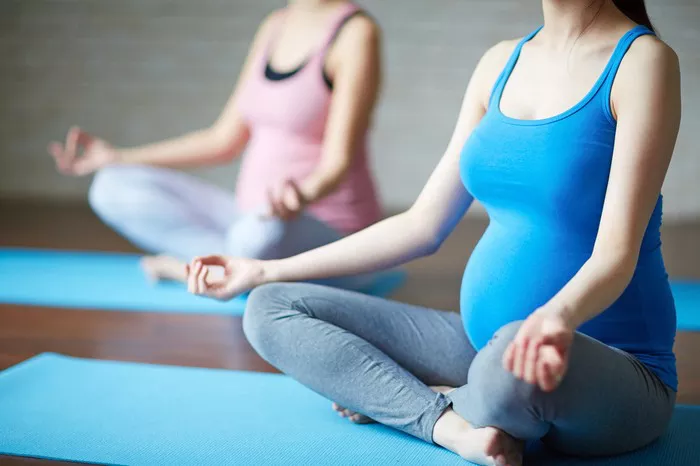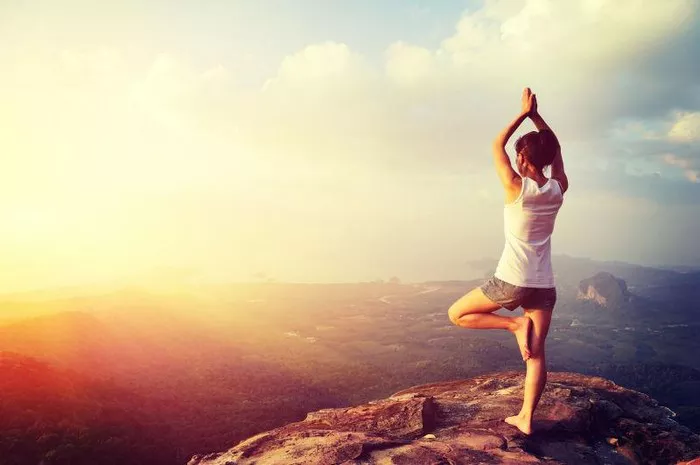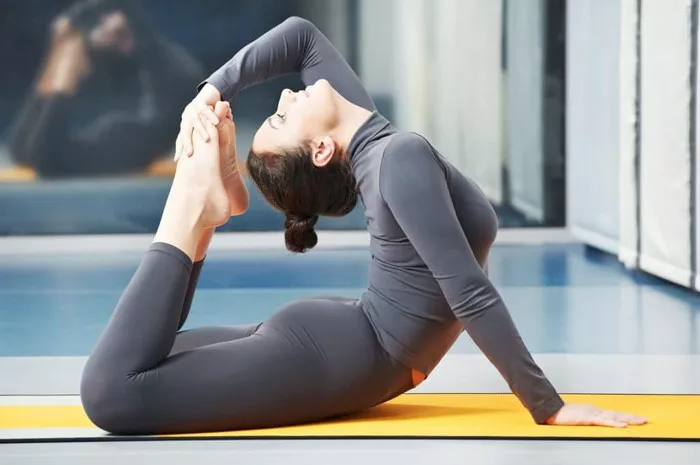Anti-gravity yoga, also known as aerial yoga, has gained significant popularity in recent years due to its innovative approach that combines traditional yoga practices with the use of a hammock or silk fabric suspended from the ceiling. This style of yoga offers unique benefits and challenges, particularly in terms of movement and flexibility. But why does Anti-Gravity Yoga allow for more movement than traditional yoga? In this article, we will explore how anti-gravity yoga allows for greater movement, the principles behind it, its physical and mental benefits, and why it has become a favorite among yoga practitioners.
Understanding Anti-Gravity Yoga
Anti-gravity yoga is an advanced form of yoga that uses suspension techniques to enhance traditional yoga postures. The key element is the hammock or aerial silk, which supports the body during poses. These hammocks are adjustable and are typically made of strong, stretchable fabric designed to support the weight of the practitioner. They are hung from the ceiling at a height where they can be used to either fully or partially support the body.
Unlike traditional yoga, where practitioners remain grounded, anti-gravity yoga allows the body to move freely in the air, supported by the hammock. This means that the body can experience movements that are not typically possible when practicing on a mat. Through this unique use of suspension, anti-gravity yoga provides more space for movement in three-dimensional planes, which opens up new possibilities for exploration and flexibility.
1. The Role of Suspension in Anti-Gravity Yoga
The primary factor that enables more movement in anti-gravity yoga is the suspension aspect. Suspension refers to the act of lifting the body off the ground and allowing it to hang freely in the air. This lifting effect has several key benefits that help promote greater movement:
Increased Flexibility
Suspending the body allows muscles and joints to lengthen without the pressure of gravity pulling them down. In a traditional yoga practice, gravity often limits the range of motion in certain stretches, especially in poses that require deep backbends or hip openers. However, in anti-gravity yoga, the hammock supports the body in a way that allows the practitioner to relax into the stretch and extend their range of motion.
For example, when performing a backbend in anti-gravity yoga, the hammock supports the practitioner’s back and hips, allowing them to lean back deeper into the stretch without putting unnecessary pressure on the spine. Similarly, in poses like “downward dog” or “cat-cow,” the hammock can help lengthen the spine more than what is typically achievable on the mat.
Reduced Compression in the Spine
In many traditional yoga poses, particularly inversions and backbends, the weight of the body can create compression in the spine. This compression can lead to discomfort or even injury if not practiced with proper alignment. Anti-gravity yoga eliminates much of this compression by supporting the body, allowing for a decompression of the spine.
For instance, when practicing inversions like “headstand” or “shoulder stand,” the hammock helps to support the body, reducing the weight on the neck and spine. This makes these poses more accessible to beginners and provides a safer way to explore these challenging postures.
Deeper Core Engagement
While the hammock provides support, it also requires practitioners to engage their core muscles more actively. In anti-gravity yoga, the practitioner must work to stabilize themselves in the air, which involves deep core engagement. This heightened core activation leads to improved strength and balance, which, in turn, allows for greater movement and control.
As the hammock moves or shifts in response to the practitioner’s body, the body must adjust, requiring the use of stabilizing muscles. This is particularly true for movements that involve inversions, flips, or transitions, as they demand full-body coordination and strength. The result is a more fluid range of movement that is difficult to achieve on the ground.
2. The Psychological Benefits of Movement in Anti-Gravity Yoga
Beyond the physical benefits, anti-gravity yoga offers mental and emotional advantages that allow practitioners to break free from traditional movement patterns. The psychological impact of practicing in the air can have profound effects on the body’s movement capabilities.
Freedom from Grounded Limitations
Being suspended in the air can create a sense of freedom that is difficult to replicate on the ground. When practitioners are no longer constrained by gravity in the same way as in traditional yoga, they may feel more liberated to explore their physical potential. This freedom encourages a playful attitude toward movement, helping individuals let go of any inhibitions and experiment with poses and transitions that might feel too difficult or intimidating in a typical yoga practice.
Building Confidence and Trust in the Body
Anti-gravity yoga can also help to develop greater body awareness and trust. The sensation of floating or being suspended in the air can be both exhilarating and challenging. Overcoming initial fear or discomfort, especially during inversions or aerial poses, helps to build mental resilience and confidence. The more a practitioner trusts their body’s ability to move in space, the more fluid and expansive their movements become.
Stress Relief and Relaxation
The gentle swinging motion provided by the hammock in certain poses also promotes relaxation and stress relief. The soothing effect of the hammock’s sway allows the body to release tension, especially in areas like the back, shoulders, and neck, which often hold the most stress. This sense of release enhances the ability to move more freely, as tension is less likely to impede range of motion.
3. The Role of Breath and Alignment
Breathwork plays a key role in anti-gravity yoga, just as it does in traditional yoga. However, the support of the hammock allows for deeper, more controlled breaths, as practitioners can more easily focus on their breath without worrying about balancing themselves or bearing weight on certain joints. The ability to breathe deeply helps the practitioner relax into each posture, enabling them to move with greater fluidity and ease.
Additionally, alignment in anti-gravity yoga is enhanced due to the support the hammock provides. When a practitioner is suspended, they can experience an improved sense of alignment because the hammock can gently guide their body into more natural positions. For example, the hammock can help align the pelvis in a backbend or support the hips in a deep stretch, which allows for greater range of motion and more movement.
4. Aerial Techniques and Variations
Anti-gravity yoga also offers a wider variety of poses and transitions, many of which are not possible in traditional yoga. The use of the hammock allows practitioners to perform movements that combine traditional yoga postures with dynamic aerial techniques, such as flips, rolls, and other acrobatic-like movements.
For example, poses like “aerial warrior” or “flying pigeon” are variations of traditional yoga postures, but they incorporate suspension to allow for deeper engagement and mobility. These aerial movements challenge the body in new ways, increasing strength, flexibility, and overall body control. As a result, anti-gravity yoga promotes a higher degree of dynamic movement, encouraging practitioners to move through different planes and explore movement patterns that might otherwise be inaccessible.
5. Enhanced Flow and Transitions
In traditional yoga, transitioning between poses can sometimes feel stiff or rigid, especially when the body lacks the flexibility or strength to smoothly move from one position to the next. Anti-gravity yoga, on the other hand, offers a more fluid flow of movement, as the hammock helps guide the body through transitions with greater ease.
When practicing aerial yoga, the practitioner can swing from one posture to another, creating a continuous flow. The hammock’s support provides the freedom to experiment with creative transitions that are not typically possible on the ground. This increased fluidity of movement makes anti-gravity yoga an enjoyable and dynamic practice.
Conclusion
Anti-gravity yoga’s unique use of suspension offers a wide range of benefits that allow for more movement compared to traditional yoga practices. By lifting the body off the ground, practitioners are able to explore greater flexibility, engage deeper muscle groups, and perform more dynamic movements. The support of the hammock also reduces the risk of injury, making challenging postures and transitions more accessible to a wider range of practitioners.
Additionally, the psychological benefits of practicing anti-gravity yoga—such as increased body awareness, trust in one’s abilities, and stress relief—contribute to a sense of freedom and exploration that encourages greater movement. With its combination of traditional yoga techniques and innovative aerial elements, anti-gravity yoga opens up a whole new world of possibilities for those seeking to enhance their physical practice and experience a greater range of motion.
Incorporating anti-gravity yoga into one’s fitness routine can be an exciting way to push the boundaries of movement, increase strength and flexibility, and cultivate a sense of joy and freedom in the body. Whether you’re a seasoned yoga practitioner or a beginner, aerial yoga offers an unparalleled opportunity to expand your movement potential and deepen your connection to your body.
Related Topics:

















